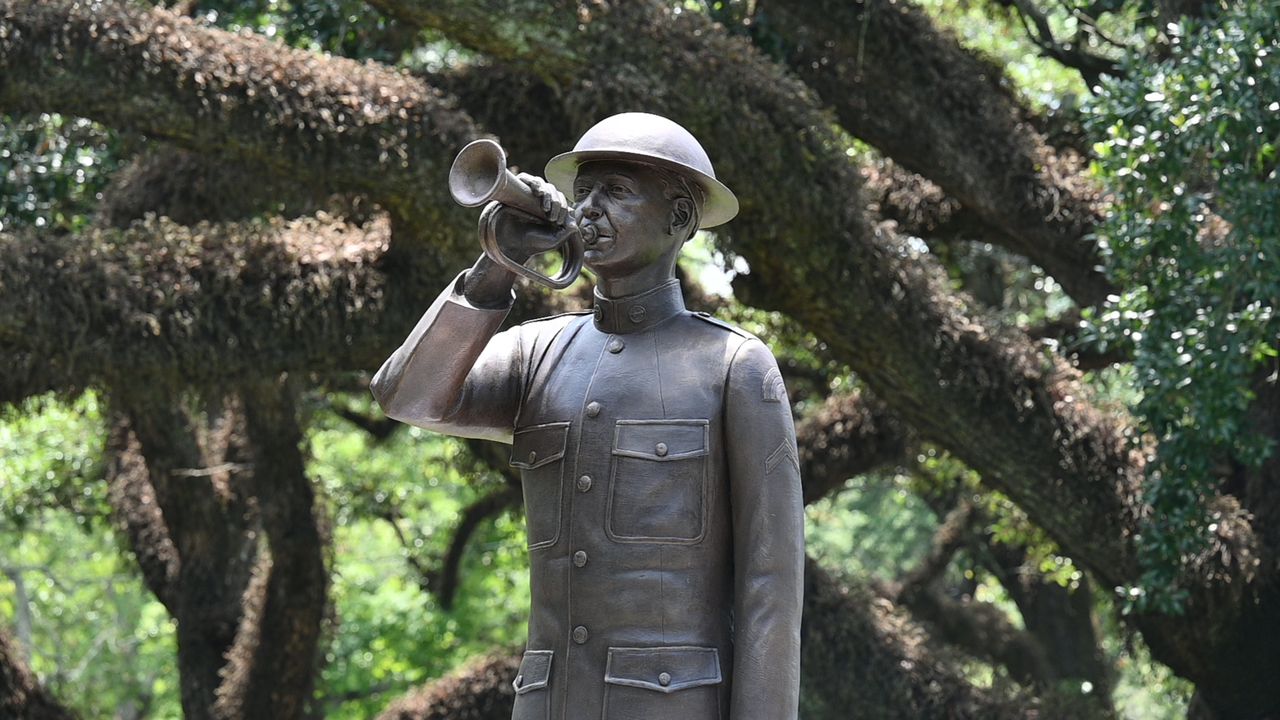Mobile pays homage to World War 1 with park project, unveiling of bugler statue
For decades, a small park that has two of Mobile’s busiest roads running alongside it has been known more for the defacement of its iconic cannon by the students of the winning team from the annual Murphy and McGill-Toolmen football game.
But for the past six years, a combined effort by the city and a number of private foundations has aimed at highlighting Memorial Park’s roots that pays homage to World War 1.
“By and large, 20,000 cars pass by this site a day,” said Jacob Laurence, project manager with the city on the park project. “Most people cannot tell you what it’s even about.”
The unveiling of a bugler statue overlooking Government Street, city officials hope, will help underscore the park’s true meaning of honoring the 116 Mobilians killed during the so-called “War to End All Wars” that ran from 1914-1918.
“The bugler is the quintessential emblem of World War 1,” Laurence said. “It’s the perfect identifier that helps people recognize this as a World War 1 site.”
The statue, created by Mobile artist Casey Downing Jr. and overlooks Government Street, was unveiled during a ceremony Monday while an actual bugler played “taps.”
Mobile Sandy Stimpson and Cammie Israel, patriotic service chair of the National Society of Colonial Dames of America’s Mobile chapter, participated in the official unveiling.
The Dames led a private fundraising initiative by securing funding through a number of foundations to help support the overall park renovations. In all, the group raised close to $300,000.
The City of Mobile contributed an additional $120,000.
The investment resulted in the cleaning and repairs to the existing World War 1 monument, the addition of a walking and park benches, lighting, and a water fountain. The park was rededicated in 2020, and included the installation of an Alabama Historical Association plaque naming 53 Mobilians who died during world War 1 but who were left off the original plaque when the monument was first dedicated in 1926.
The bugler statue was regarded as the final piece to the park’s overhaul.
“It’s more visible than it’s ever been,” said Mobile Mayor Sandy Stimpson.
The bugler statue, Stimpson said, will help identify the park and the World War 1 memorial to its true meaning. The large memorial constructed of marble from Sylacauga, was designed by renowned Mobile architect, George Rogers, and was financed in 1917 by the Mother’s Army and Navy League. That group raised $20,000 to erect the monument in honor of their sons lost during the war. It was dedicated in 1926.
Mobile’s World War 1 monument is the second-largest in Alabama behind only the Montgomery building that houses the Alabama Department of Archives and History.
At the time of its dedication, the monument was located in what was then considered the far western edges of Mobile’s city limits. The park, in more modern years, has served as a bit of an anchor to portions of Mobile’s midtown neighborhood and The Loop.
Stimpson said he hopes the revitalized park is utilized more by the public, especially by photographers who could utilize the bugler statue, water fountain or the large monument as backdrops for wedding pictures.
“It’s been one of those neglected parks in Mobile,” said Stimpson. “But it’s beautiful.”
